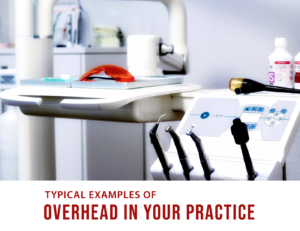 Overhead is classified as ongoing business expenses not directly attributed to creating a product or service, and there’s no exception to needing to cut overhead in a dental practice setting.
Overhead is classified as ongoing business expenses not directly attributed to creating a product or service, and there’s no exception to needing to cut overhead in a dental practice setting.
According to an article on Dental Economics, “The largest impacts on overhead are generally staffing and employment costs, lab fees, office rent, and dental supply costs, and these can often account for nearly two-thirds of a practice’s total overhead.”
Identifying and reviewing those areas (and possibly others, depending on your practice) is imperative to deciphering where there might be room to cut costs. Once you’ve figured out those areas, you need to continue to review them on a monthly, quarterly, and annual basis to see if there is a pattern in the spending in those areas. This could also give you an opportunity to find a temporary time to cut costs, based on your findings.
A dental CPA can help you specifically review, monitor, and identify areas where you may be overspending. Together, you can work on ways to cut overhead, leaving more money in your pocket to be allocated to other areas of your business. Regardless of your training as a dental professional, you must also remember that you’re a business owner and you need to make decisions that will help your practice grow, thrive, and continue to be successful.
